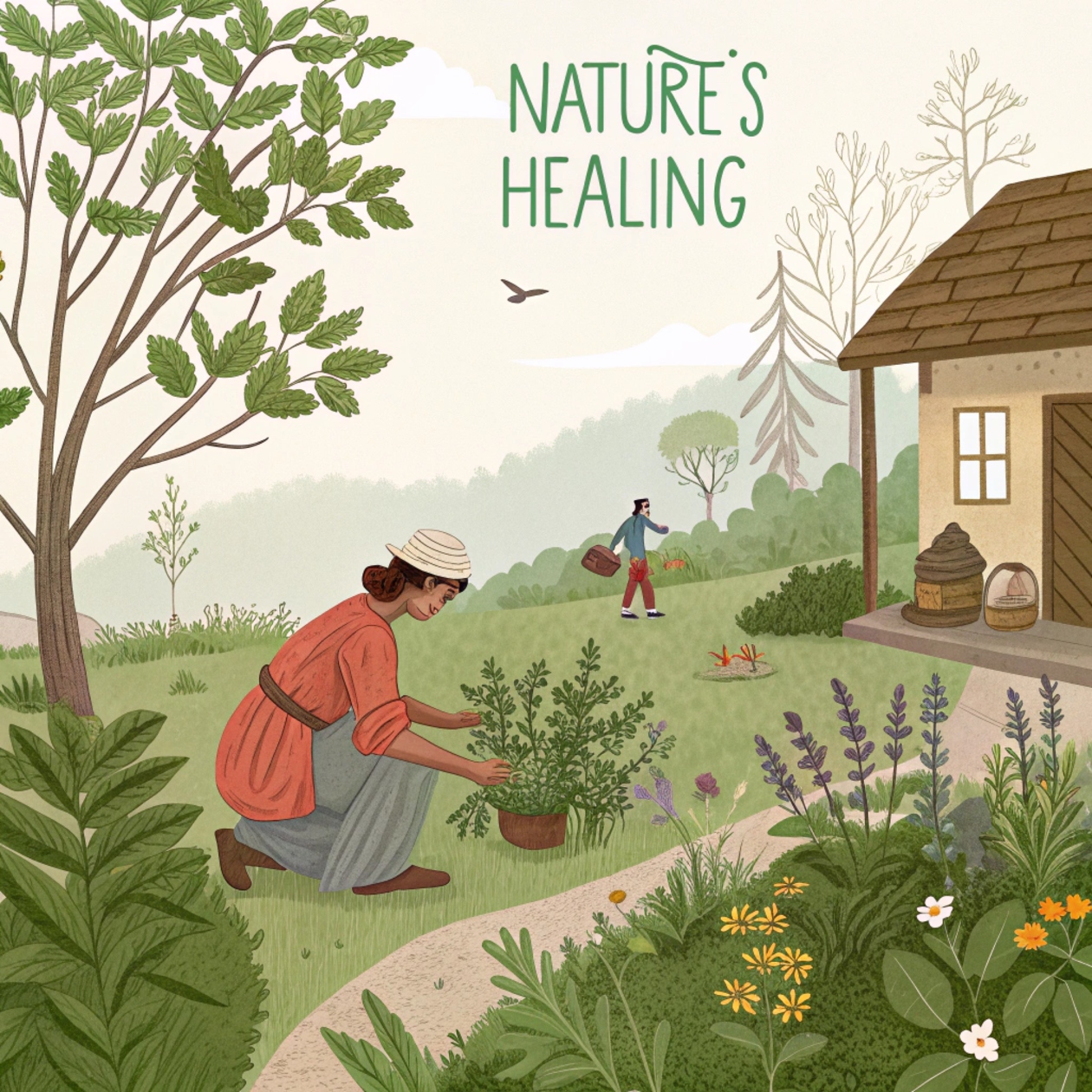In today’s fast-paced, chemical-laden world, more people are turning back to the earth for answers to their health problems. Nature, long revered as the original healer, holds a treasure trove of botanical remedies. From growing your own medicinal plants to crafting soothing herbal teas, embracing natural healing is not just a health movement—it’s a lifestyle rooted in self-reliance, balance, and harmony with the environment.
This article explores the full journey of natural healing—from planting seeds in your backyard to sipping homemade teas that nourish body and soul. Whether you’re a novice herbalist or simply someone looking to enhance your well-being naturally, this guide will inspire you to harness nature’s potent gifts.
The Philosophy Behind Natural Healing
Natural healing isn’t about rejecting modern medicine but rather complementing it with the gentle power of herbs, lifestyle choices, and preventative care. At its core, it’s about working with your body’s natural rhythms, supporting the body’s ability to heal itself, avoiding unnecessary chemicals and synthetic drugs, and respecting the interconnectedness of humans and nature.
Cultures worldwide have long used plants for healing—Traditional Chinese Medicine, Ayurveda, Native American traditions, and European folk medicine all have robust herbal practices. These systems remind us that healing isn’t just about curing symptoms; it’s about restoring balance.
Growing Your Own Medicinal Garden
You don’t need acres of land or a botany degree to grow a healing garden. Many potent medicinal plants thrive in pots on a windowsill or in a small backyard patch. The benefits of growing your own medicine are numerous: freshness, accessibility, sustainability, and a deeper connection with nature.
Top Medicinal Plants to Grow at Home
Here are some easy-to-grow herbs for beginners, each with powerful healing properties:
Chamomile (Matricaria chamomilla)
Benefits: Calming, aids sleep, soothes digestive issues
How to use: Brew flowers into tea or use in baths for relaxation.
Peppermint (Mentha × piperita)
Benefits: Eases nausea, improves digestion, relieves headaches
How to use: Make tea or use as a compress.
Calendula (Calendula officinalis)
Benefits: Anti-inflammatory, speeds wound healing, skin-soothing
How to use: Infuse in oil for salves or steep petals in tea.
Lemon Balm (Melissa officinalis)
Benefits: Reduces anxiety, supports restful sleep, antiviral
How to use: Drink as tea or use fresh in cold infusions.
Echinacea (Echinacea purpurea)
Benefits: Immune booster, helps fight colds and infections
How to use: Roots and flowers can be dried for tinctures or tea.
Lavender (Lavandula angustifolia)
Benefits: Calming, antibacterial, pain-relieving
How to use: Use in teas, bath sachets, or infused oils.
Thyme (Thymus vulgaris)
Benefits: Antimicrobial, supports respiratory health
How to use: Add to steams, teas, or make throat gargles.
Harvesting and Preserving Herbs
Once your plants are growing, knowing when and how to harvest is essential. Harvest in the morning after dew dries but before the sun is too strong. Air-dry herbs in a dark, well-ventilated space. Use drying racks or bundle stems upside-down. Store dried herbs in airtight glass jars, away from light and heat. Label each jar with the herb name and date of harvest to keep track of freshness.
Crafting Herbal Teas for Health and Vitality
Herbal teas (or tisanes) are among the easiest and most pleasurable ways to benefit from medicinal plants. Not only do they offer therapeutic effects, but they also provide a soothing daily ritual.
How to Brew Medicinal Teas
Infusion (for leaves, flowers, soft parts): Use 1–2 teaspoons of dried herbs per cup of hot water. Steep covered for 5–10 minutes.
Decoction (for roots, bark, seeds): Simmer 1–2 teaspoons per cup in water for 15–20 minutes.
Cold Infusion: Soak herbs in cold water overnight.
Always use non-metallic containers (like glass or ceramic) for best results. Cover your tea while steeping to prevent volatile oils from evaporating.
Popular Herbal Tea Blends
Relax & Sleep Tea
Chamomile
Lemon balm
Lavender
Hint of valerian root (optional)
Immune Support Blend
Echinacea
Elderflower
Ginger root
Peppermint
Digestion Aid Tea
Peppermint
Fennel seeds
Chamomile
Lemon verbena
Stress Relief & Mood Boost
Holy basil (Tulsi)
Lemon balm
Rose petals
Oat straw
Each blend supports the body gently but powerfully. Drinking herbal teas consistently over time offers cumulative health benefits—this is the beauty of tonic herbs that nourish long-term vitality.
The Mind-Body Connection
Natural healing is not just physical—it nurtures the mind and spirit too. The act of tending a garden, brewing a tea, or applying a soothing salve connects you to something deeper. It promotes mindfulness, personal empowerment, and a spiritual connection with the earth’s rhythms and ancient wisdom.
Incorporating herbal rituals—like a nightly tea or a garden walk—creates a healing rhythm to daily life that modern medicine often overlooks.
Safety First: Using Herbs Responsibly
While herbs are generally gentle, they are also powerful. Use them with respect and knowledge. Learn about each herb before using it, especially if pregnant, nursing, or on medications. Start small to see how your body reacts. Avoid wild harvesting unless you’re 100% sure of plant identification. Consult a qualified herbalist or healthcare provider for serious conditions.
Herbal medicine works best as part of a holistic lifestyle: good nutrition, rest, movement, and emotional balance all play vital roles.
Final Thoughts: Embrace the Wisdom of Nature
Nature’s healing wisdom is not lost—it’s growing right outside your door, waiting to be rediscovered. Whether you grow a few pots of herbs on your balcony or establish a lush backyard apothecary, you’re cultivating more than plants. You’re planting the seeds of wellness, empowerment, and connection.
By embracing the art of herbal tea and natural medicine-making, you step into a timeless tradition—one where healing is both simple and profound. Start small, grow steadily, and let the plants guide you. The path to vibrant well-being is steeped in a cup of tea and rooted in the earth beneath your feet.
Resources to Explore Further
The Lost Book of Herbal Remedies by Nicole Apelian
Rosemary Gladstar’s Medicinal Herbs: A Beginner’s Guide
Herbal Academy’s Online Herbal Courses
Local herbalist meetups or plant walks in your community




Comments ()